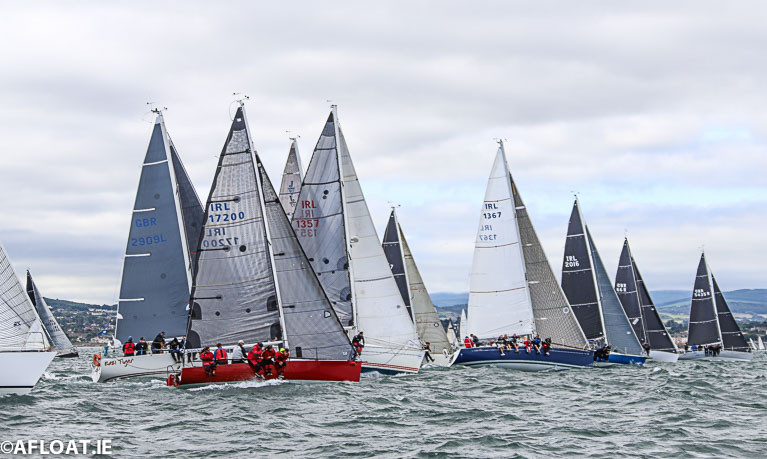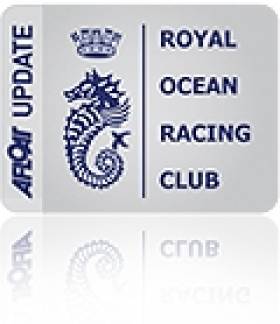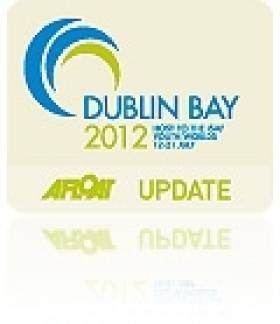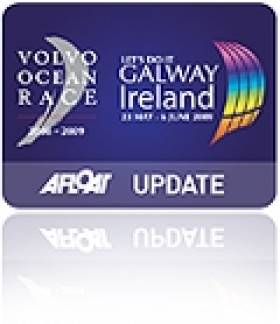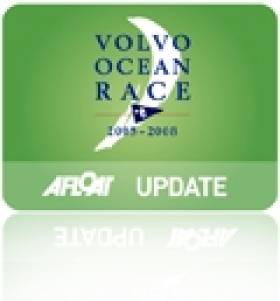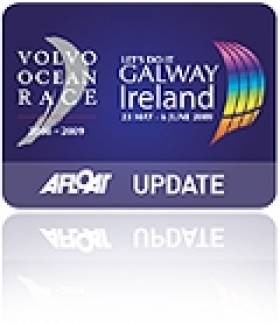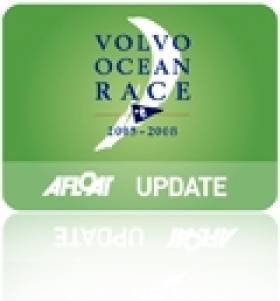Displaying items by tag: race
The Joys & Language of Yacht Racing
What is the most important, challenging and decisive part of yacht racing?
“The start of the race.”
That was what experienced skippers and crews told me - on the start line a race could be won and lost.
So, when I ‘stepped up’ from dinghy racing and what was described to me by the “cruiser class” as “the wet ass brigade” I was well aware of start line importance.
But I found there was one major difference - Language and the force and manner of its expression!
My introduction to this was in my first race in my first cruiser, my first ‘Scribbler’ – a Ruffian 23. Two weeks after I bought her and two days after launching, she was on the start line for the National Quarter Ton Championships raced out of the Royal Cork YC at Crosshaven. It was a heavy weather day, some 30 years ago, so windy that racing was inside Cork Harbour because outside the conditions were too severe.
My experience up to then was of dinghy racing, Mirrors and 12ft. Vagabonds in Monkstown Bay and National 18 crewing. Scribbler’s crew was me on the helm, with my young son and his friend. On the start line over 20 yachts of various sizes and design circled each other in what was then the 10-5-minutes start sequence. Helming 23-feet amongst them was a bit different from 12-foot dinghies as they prowled each other.
When the start gun went they all charged for the same part of the line – as close as they could get to the stern of the committee boat, with roaring and shouting erupting.
Some epithets I never thought I’d hear from the refinements of the RCYC which I had joined only shortly before entering the Championships, were uttered. Wow, the language, the shouts of “Up, Up, Up you….!!” Retorts of: “You’ve no ……..rights…” “Get out of there….” (the moderate comment) and more …
How we got across the line without being thumped or banging into another boat I can never remember.
The course was along the edge of the Aghada shoreline, then a nice freeway before the ESB ruined it by turning it into an obstacle course with their waterborne protrusions associated with the onshore power station. We rounded the weather mark and up went kites. In the days before I became more cautious about spinnakers, we hauled too, for a speedy broad reach - then we came to the gybe mark and, well, that didn’t go too well…a series of three photos appeared of Scribbler afterwards captioned – “going, going, gone... The third showed a hand grasping the portside cockpit edge with quite a lot of the hull visible!
Scribbler came upright into the wind and shook herself, possibly wondering about the idiot on the helm. We scrambled to get the kite off, shook ourselves as well, then carried on after the fleet and finished the race.
Back in the clubhouse one of the other skippers approached me, the ‘newbie’ of the fleet and observed that we had shown a fair turn of speed on the reach… “Haven’t had the boat long?” he queried… “Not long,” I agreed.
That was “courageous,” - I like to think that’s the word he used! - “a three-sail reach in those conditions,” he observed. So I asked what he meant and was told: “you had all three sails up, main, jib, spinnaker…”
“Oh,” I replied. “Should I have taken one down…?”
So I learned a bit more about sailing – and about language…
Those thoughts came to mind this week when I heard a man claim on a national current affairs radio programme that a ‘scientific study’ conducted it appeared in just three days, rather a short timespan for scientific study, had revealed that even speaking was dangerous because COVID 19 could be emitted in speech. Sport, he said, might never be possible again for a very long time. Spectators and players would all have to wear masks because: “Can you imagine how dangerous a place it would be with thousands of spectators roaring and shouting at a match?”
Whatever about that scenario, I thought, if speech has to be controlled, it would make sailing so quiet that racing start lines would never be the same again, not to mind crews full of masked individuals.
At least the skipper might be muted!
Listen to the podcast below:
Northern Irish Crew On Track in Atlantic Rowing Race
#Rowing: Home to Portrush and Relentless, from Cork and Dublin, look set to finish the Atlantic Challenge race in under a week. The Northern Irish crew has taken a clear fifth place and are putting in good mileage each day – they covered 88 nautical miles (163 kilometres) moving into the 27th day of the race from the Canary Islands to Antigua. The crew of George McAlpin, Ally Cooper, Gareth Barton and Luke Baker had 459 nautical miles (850 km) to the finish.
One place behind them lie another four, Relentless. The Cork/Dublin crew have also benefitted from the favourable winds. If they continue their fine progress they will land in English Harbour in Antigua just one day after Home to Portrush, on January 15th.
Solo oarsman Damian Browne has crossed the 1,000 nautical mile mark and has been punching in very steady times after coming through capsizes, an injured face and a damaged steering system. The Galway man, who rows as Gullivers Travels, is projected to finish on Valentine’s Day, February 14th.
RORC Transatlantic Race Suffers Second Postponement
#rorc – The start of the RORC Transatlantic Race has been further delayed due to adverse weather conditions. A further amendment to the Sailing Instructions was posted by the Race Committee delaying the scheduled start to 1000 UTC Sunday 30th November.
The Race Committee made the decision to postpone the start because the forecasted weather conditions for a decrease in wind as the day progressed has not materialised. In fact the wind has increased during the day to a steady 35+ knots with gusts in excess of 40 knots (and higher!) and the committee were concerned at the ability to lay a start line in the deep water off Puerto Calero Marina as well as the competitors' ability to manoeuvre safely in the confines of the marina.
The race will now start on Sunday 30th November at 1000 UTC.
Search Ends for Missing Sailors in San Francisco Yacht Tragedy
#MISSING SAILORS - The US Coast Guard last night suspended its search for four yacht crew members - including two Irish sailors - who went missing after what's being described as San Francisco's worst ever sailing accident, Fox News reports.
Petty Officer Caleb Critchfield told the Associated Press: "There's a window of survivability and we searched well beyond that window."
Boats and aircraft had combed over 5,000 square miles of ocean in a marathon 30-hour operation before the search was halted at sunset last night. It is not expected to resume.
As previously reported on Afloat.ie, the missing include Irish yachtsmen Alan Cahill, originally from Blarney in Co Cork, and his friend Elmer Morrissey, who had moved to the US for work only last year, according to friends and colleagues on Facebook.
The two men, along with fellow crew Jordan Fromm, Alexis Busch and Marc Kasanin, were thrown into the frigid water after their 38-foot yacht Low Speed Chase ran aground at the Farallon Islands, some 25 miles off the coast of San Francisco in northern California.
Three other crewmembers, including the boat's owner and skipper James Bradford, were rescued from the rocks shortly after the incident. The body of Kasanin, 45, was recovered from the water hours later.
The boat had been competing in the Full Crew Farallones Race with 40 other yachts between San Francisco and the islands when the tragedy occurred.
Known for its rough conditions with 14-foot swells and winds of up to 20 knots, the near-century old tradition has "never been for the faint of heart".
Dublin Bay Issues Details of Sailing's Youth Worlds 2012
#SAILING-Dublin Bay organisers have published detials of next year's 2012 ISAF Youth Sailing World Championships that will be staged on the captial's waters, one of Dublin's biggest sporting events in 2012.
The Notice of Race for the 2012 ISAF Youth Sailing World Championship, the 42nd version of the championship has been released.
Over 300 of the world's top youth sailors are expected to descend on Dublin Bay from 12-21 July 2012 and add their name to a list of winners that includes triple Olympic gold medallist Ben Ainslie (GBR), three-time America's Cup winner Russell Coutts (NZL) and four time Olympic gold medallist Alessandra Sensini (ITA).
After the 2011 ISAF Youth Worlds in Croatia, Brian Craig, Dublin Bay 2012 Chairman, said, "We're in good shape. There's been a lot of interest in it, both public and from the sailing community in Ireland. A group of about 50 have been working on this project for about four years now.
"This is the biggest yachting event ever to come to Ireland. We've had some big races but from the pure sports side this really is the biggest thing we've ever done.
"Ireland is really going to pull behind this event; there is no doubt about that."
A full interview with Brian Craig on the Dublin Bay 2012 build up is here.
The 2012 Youth Worlds will take place on Dublin Bay, based at Dun Laoghaire. Dun Laoghaire is a historic town on the outskirts of Dublin. The harbour, opening on to Dublin Bay is a large man made port dating back to the 19th century when it was built for a visit of Queen Victoria.
The horse-shoe shaped bay, open to the east and approximately six miles cross, allows for fair racing. The winds are predominantly driven by the North Atlantic weather systems passing over the country resulting in a prevailing south westerly breeze giving a range of sailing conditions. Dublin Bay is subject to tide and although the speed of the current is not excessive it is often of tactical importance. The size of the bay is capable of accommodating large fleets and multiple courses.
The Royal St George Yacht Club (RSGYC) will host the 2012 championship in association with its neighbouring clubs, the National Yacht Club (NYC) and the Royal Irish Yacht Club (RIYC).
Open to competitors aged under 19 in the year of the championship (i.e. for Ireland, under 19 on 31 December 2012) in the events and equipment listed below (all supplied), the Youth Worlds occupies a unique place in the sailing calendar. Simply getting to the championship is a major achievement for most as entry is limited to one boat per nation, per event, meaning sailors first having to win through their national qualification series.
2011 ISAF Youth Sailing World Championship Events
Event - Equipment
Boy's One Person Dinghy - Laser Radial
Girl's One Person Dinghy - Laser Radial
Boy's Two Person Dinghy - 420
Girl's Two Person Dinghy - 420
Boy's Windsurfer - RS:X with 8.5m2 sail
Girl's Windsurfer - RS:X with 8.5m2 sail
Open Multihull - Sirena SL16
Open Skiff - 29er
The notice of race published by the organisers is below:
42nd ISAF Youth Sailing World Championship 2012
12 - 21 July 2012, Dun Laoghaire, Ireland
Notice of Race
Approved by ISAF November 23, 2011
1. GENERAL
1.1 The Irish Sailing Association together with The Royal St George Yacht Club, National Yacht
Club and Royal Irish Yacht Club will host the 42nd ISAF Youth Sailing World Championship
and cordially invites all ISAF member national authorities to participate. The event will be held
from 12 to 21 July 2012.
1.2 The venue will be at the Royal St George Yacht Club and the National Yacht Club.
2. ORGANIZING AUTHORITY
The Championship will be organized by Dublin Bay Youth Worlds 2012 Limited a not-for-profit
company in conjunction with the Irish Sailing Association under the authority of the
International Sailing Federation (ISAF).
Address: Youth Worlds 2012
Royal St George Yacht Club,
Dun Laoghaire,
Co Dubllin
Telephone: +353 872 235 148
E-mail: [email protected]
Website: www.isafyouthworlds.com
www.dublinbay2012.com
3. RULES
3.1 The regatta will be governed by the rules as defined in The Racing Rules of Sailing.
3.2 No national prescriptions will apply.
3.3 Class rules regarding membership will not apply.
3.4 In accordance with the ISAF Advertising Code, advertising on the supplied equipment is only
available to the organising authority. Competitors shall wear bibs supplied by the organizing
committee.
4. EVENTS, CLASSES, EQUIPMENT AND EQUIPMENT CHECK
4.1 The events and classes are as follows:
EVENT CLASS
Boy’s One Person Dinghy Laser Radial
Girl’s One Person Dinghy Laser Radial
Boy’s Two Person Dinghy 420
Girl’s Two Person Dinghy 420
Boy’s Windsurfer RS:X with 8.5m2 sail & 60cm fin
Girl’s Windsurfer RS:X with 8.5m2 sail & 60cm fin
Open Skiff 29er
Open Multihull SL 16
4.2 A penalty may be given or the use of the equipment may be withdrawn if, in the opinion of the
organizing authority, a competitor treats or handles the equipment without care or in a manner
which causes or is likely to cause damage to the equipment.
4.3 All equipment will, except items listed in 4.4 and 4.5, be supplied free of charge including rig,
sail and gear for all classes (except items mentioned in 4.7, 4.8, 4.9 and 4.10).
4.4 The organizing authority will not supply compasses or other tactical devices, wind indicators,
buoyancy jackets, trapeze harnesses, hiking pants, wet or dry suits or other personal gear. No
modification to the equipment shall be made unless authorized by the organizing authority.
4.5 Competitors may bring and use the following items sponge, hand bailer, water bottles (only to
be attached to the equipment with rope or tape), shockcords, compass, wind indicators,
including yarn or thread (may be tied or taped anywhere on the equipment, provided their
fitting does not mark, pierce or damage the hull, deck, sails or spars).
4.6 Adhesive tape may be used anywhere above the waterline, but the tape needs to be
removable after the event without leaving any permanent damage. There shall be no writing
with permanent markers directly on the supplied equipment. No wax shall be applied. Hulls,
centreboards and rudders may be cleaned, but only with water and ordinary soap.
4.7 For Laser Radial only: Competitors must bring their own lines, sheet and blocks
(including ratchet block, outhaul, cunningham, traveller and vang systems) and
tiller/tiller extension. Competitors will be supplied with a fully fitted Laser hull including the
deck block fitting and the two single blocks and cleats for the deck led cunningham and
outhaul systems. The boats will be supplied with mini side deck cleats for the main sheet,
centreboard, rudder, mast, boom and sail.
4.8 For 420 only: Competitors must bring their own tow-rope (in accordance with
specification of the class rules). Competitors may bring and use a fitting made of
tape/wood/plastic and shockcord for retaining the spinnaker halyard. This fitting shall only be
attached using tape and not in a position above the gooseneck.
4.9 For RS:X only: Competitors must bring their own outhaul, downhaul systems (ropes,
cleats and pulleys) and the uphaul line. No permanent fixings will be used to attach these.
Harness lines will not be provided by the organisers.
4.10 For 29’er only: The boat's sails, spars, rigging, control lines and fittings shall be used as
supplied, unless alterations or additions are specifically authorized by the ISAF Technical
Delegate. The boats will be fitted with foot straps. Competitors may install their own tiller
extension, or twin extensions, but the attachment fitting must be left installed on the tiller at the
end of the regatta.
4.11 The equipment will not be required to be pre-measured. However, a boat or equipment may
be inspected at any time for compliance with the rules.
4.12 Boats may be required to carry cameras, sound devices or positioning devices as specified by
the organising authority.
4.13 Failure of supplied equipment will not be grounds for redress. This changes rule 62.1(a).
5. ENTRIES
5.1 A national authority in good standing with ISAF may enter one crew in all or any of the
disciplines listed in 4.1.
5.2 Such national authority may register an official team leader and one coach. If a national
authority enters competitors in at least one event per race area, one additional coach is
permitted.
In all other cases only one team leader and one coach is permitted.
RACE AREA EVENTS
A Boy’s and Girl’s One Person Dinghy
B Boy’s and Girl’s Two Person Dinghy, Open Multihull
C Boy’s & Girl’s Windsurfer, Open Skiff
5.3 Every competitor must be a national of the country which is entering him or her. The ISAF
Executive Committee will resolve all applications or disputes relating to the determination of
the national authority a competitor may represent. Each national authority is responsible to
ensure that its competitors comply with this requirement.
6. CONDITIONS OF ENTRY
6.1 EQUIPMENT RESERVATION
All national authorities who are intending to enter a team will complete an Equipment
Reservation on line at www.isafyouthworlds.com specifying the events and number of
coaches they want to enter and pay a non-refundable €100 Equipment Reservation Fee per
equipment by 31 January 2012.
Equipment reservations submitted after 31 January 2012 may not be guaranteed a place in
the regatta.
If at the equipment reservation deadline the numbers of competitors in an event should
exceed the maximum limit of equipment supplied, the Organizing Authority, in consultation
with ISAF, may then implement an alternative racing format allowing equipment to be shared
by two or more competitors/crews.
6.2 FINAL ENTRY
Entries will be made on-line at www.isafyouthworlds.com and must be received with the
championship fee described below (minus the Equipment Reservation Fee paid) by the
organising authority by 30 April 2012. Accommodation and equipment is guaranteed only to
teams who have fulfilled the requirements in 6.1 and have submitted an entry form and paid
the championship fee by 30 April 2012. Entries received after 30 April 2012 will only be
accepted at the discretion of ISAF and in consultation with the Organizing Authority and with
the payment of the Late Entry fee.
6.3 A national authority which has not yet chosen a team by 30 April 2012 deadline must provide
the Organizing Authority with information about its schedule for selecting a team and the
number of persons, genders if possible, and their events to be entered by this deadline. No
additions or changes to the list can be accepted after 30 April 2012 without written approval of
ISAF and in consultation with the Organizing Authority.
OTHER REQUIREMENTS
6.4 Competitors and team officials will receive an identification card at registration at the venue
which must be displayed at all times. Access to competitor’s preparation and residential areas
will be restricted. Spectators at the sailing venue may also be required to display a
registration card which will give access to specific areas only.
6.5 Each team is required to bring to the venue two of their national flags in approximate size 1.0
x 1.5m
6.6 The Medical Treatment Permission Form available on www.isafyouthworlds.com must be
submitted for each competitor no later than team registration. This form does not give
dispensation for taking prescribed medication. For medication declarations, please follow
procedures as given in the ISAF Anti-Doping Code (ISAF regulation 21).
6.7 All competitors shall be under the age of 19 years on 31 December 2012 (born after 31
December 1993) and be registered as an ‘ISAF Sailor’ on the ISAF website, www.sailing.org
Each national authority is responsible to ensure that its competitors comply with this
requirement.
6.8 At all times when afloat competitors are required to wear a personal buoyancy jacket. The
organizing authority reserves the right to reject any buoyancy jacket which it considers
unsuitable. Personal buoyancy shall comply with appropriate national standards.
6.9 Each team is required to bring a 250ml bottle containing water from their home seas or lakes
for the Mixing of the Waters ceremony.
7. CHAMPIONSHIP FEE AND DAMAGE DEPOSITS
7.1 Each competitor, team leader and coach will be charged a championship fee of EUR 900 per
team member (EUR 1.200 for Late Entries) for the 10 scheduled days of the event (minus any
Equipment Reservation Fee paid), payable to the organizing authority as instructed on the
entry form.
The Late Entry fee will apply to all entries received after 30 April 2012.
7.2 The championship fee will include airport shuttle from and to Dublin Airport, accommodation
and meals, starting from the midday meal on 12 July and ending with the breakfast meal on
21 July 2012. For accommodation etc prior to 12 July or/and after 20 July, please contact
Moyra O’Donoghue at [email protected]
7.3 There will be no refund if entered competitors withdraw their entry after the entry
deadline.
7.4 A damage deposit of EUR 250 for Laser Radial and RS:X and EUR 350 for 420, 29er and
SL 16 (cash or credit card authorisation) per supplied equipment will be required for
registration at the venue. In case of damage to any equipment, the competitor may be
required to pay an additional amount in order to maintain the damage deposit balance at EUR
250 for Laser Radial and RS:X and at EUR 350 for 420, 29er and SL 16.
7.5 A damage deposit by way of credit card authorisation will be required by the hotel for possible
damage to the hotel premises or for services provided by the hotel such as (additional) food,
drink and the use of telephone(s), etc.
8. SCHEDULE
12 races are scheduled for each event. No more than 3 races will be sailed on any day.
Thursday 12 July Official Arrival Day Registration
Equipment Allocation & On Water Training
Team Leaders Meeting
Friday 13 July Training Day Equipment Allocation
Competitors Briefing
On Water Training
Practice Race
Opening Ceremony
Saturday 14 July Race Day 1 2 Races
Sunday 15 July Race Day 2 3 Races
Monday 16 July Race Day 3 2 Races
Tuesday 17 July Reserve Day
Wednesday 18 July Race Day 4 2 Races
Thursday 19 July Race Day 5 2 Races
Friday 20 July Race Day 6 1 Race
Equipment Return
Closing Ceremony
Saturday 21 July Departure Day Departure
Equipment Supply The supplied equipment will be available on 12 July 2012. The venue is
not available for practice sailing before 12 July 2012.
9. SAILING INSTRUCTIONS
The sailing instructions will be available for all competitors at registration at the venue and on
the event website approximately one month before the championship.
10. PENALTY SYSTEM
10.1 Appendix P, Immediate Penalties for Breaking Rule 42, will apply.
10.2 For the SL 16 and 29er events rules 44.1 and 44.2 are changed so that only one turn,
including one tack and one gybe, is required.
10.3 Decisions of the jury will be final as provided in rule 70.5.
11. SCORING
11.1 Five races are required to be completed to constitute a series.
11.2 (a) When fewer than five (5) races have been completed, a boat’s series score will be the total
of her race scores.
(b) When five (5) or more races have been completed, a boat’s series score will be the total of
her race scores excluding her worst score.
11.3 For RS:X Rule B8.2, B8.3 and B8.8 shall not apply.
12. SUPPORT BOAT
(a) Private or team support boats are not permitted.
(b) Team Leaders and coaches may go afloat only in craft supplied by the organizing
authority, and clearly marked as such, from Friday July 13 to Friday July 20.
13. BERTHING
Boats shall be kept in their assigned places in the boat parks.
14. DRUG TESTING
Competitors are reminded of the ISAF rules and regulations concerning the use of banned
methods and substances, which are contained in ISAF Anti Doping Code. Drug testing may
take place during this event.
15. DISCLAIMER OF LIABILITY
Competitors participate in the championship entirely at their own risk. See rule 4, Decision to
Race. The organizing authority will not accept any liability for material damage or personal
injury or death sustained in conjunction with or prior to, during, or after the championship.
16. PRIZES
Prizes will be given as follows:
16.1 ISAF medals in gold, silver and bronze will be awarded to first, second and third overall
finishers in each event.
16.2 The ISAF World Youth Sailing Championship Trophy will be awarded to the winning crew in
the Boy’s Two Person Dinghy event.
16.3 The RYA Trophy will be awarded to the winning crew in the Girl’s Two Person Dinghy event.
16.4 The ISAF St. Lawrence Trophy will be awarded to the winner in the Boy’s One Person Dinghy
event.
16.5 The ISAF Royal Netherlands Centennial Trophy will be awarded to the winner in the Girl’s
One Person Dinghy event.
16.6 The ISAF Paul Phelan Trophy will be awarded to the winner in the Boy’s Windsurfer event.
16.7 The ISAF St. Moritz Board Sailing Championship Trophy will be awarded to the winner in the
Girl’s Windsurfer event.
16.8 The ISAF Paul Henderson Trophy will be awarded to the winner in the Open Multihull event.
16.9 The ISAF Prince Henry the Navigator Trophy will be awarded to the winner in the Open Skiff
event.
16.10 There will be a Trophy awarded to the top-scoring national authority team.
16.11 The ISAF Bengt Julin Trophy will be awarded to a competitor or a National Team that has in
the competitors’ opinion done most to foster international understanding and has displayed
the attributes that should be encouraged in international competition.
16.12 Other trophies may be awarded for sportsmanship, exemplary behaviour and rules compliance
during the championship.
17. FURTHER INFORMATION
17.1 Entries will be acknowledged in writing.
17.2 General information about travel to Dun Laoghaire, Ireland and its facilities is available
through the website: www.dublinbay2012.com
Disaster Strikes as Puma Dismasted in Volvo Ocean Race
The rig onboard PUMA's Mar Mostro failed at around 15:00 UTC in the southern Atlantic Ocean, about 2,150 nautical miles from Cape Town, South Africa.

Puma crew try to retrieve the broken rig. Photo: Amory Ross/PUMA Ocean Racing/Volvo Ocean Race
Skipper Ken read reported: "We were sailing on a port tack, beam reaching in 22-23 knots of breeze, heading east northeast with eight to 10 foot waves when the mast failed. There were no warning signs.
"There was no panic onboard, and all crew are safe and well.
"Thanks to amazing seamanship, the three pieces of the mast and all of the sails were recovered. We haven't suspended racing at this point and are weighing up our options.
"At this point we are not using our engine, but are taking some time to clear our heads and evaluate next steps. Our plans may include heading to the island of Tristan da Cunha – about 700 nautical miles from us, nearly on the way to Cape Town.
"This is the saddest and most disappointed 11 people on earth. We were in a comfortable second position, traveling south to get into the final front and head across the southern Atlantic towards Cape Town.
"We were planning to be there in five days. At this stage, my goal is to make sure we get this crew back safely and we will look at options as to how to get back in this race."
The Brazilian search and rescue organization have been informed and are on standby to assist if necessary.
PUMA Ocean Racing's shore team is working on a recovery plan to ensure the yacht can rejoin the race as soon as practically possible and will work closely with Volvo Ocean Race to determine the cause of the dismasting.
Volvo Ocean Race control is in constant contact with the team to establish the full extent of the damage and ensure the crew are given full support to enable them to deal with the situation.
The causes of the dismasting are not known at this stage. However, the rig is of a different origin and manufacture to that of Abu Dhabi Ocean Racing's Azzam which suffered a failure earlier during Leg 1.
Further information will be issued as it becomes available.
Heineken Join Galway's Volvo Ocean Race –Video here!
#VOLVO OCEAN RACE – As plans progress to celebrate the end of the Volvo Ocean Sailing Race in Galway next June Heineken has won the pouring rights and the brewer is expecting to serve over one and a half million people during the course of the event.
They're expecting to attract over 200,000 people per day, for each of the eight days. The world race concludes with an In-Port Race and Pro-Am Race and the Prize Giving Ceremony. Thirsty work? Here's hoping! And Here's Heineken's promo video courtesy of youtube with VOR racer Jerry Kirby comparing the last Galway stopver to 'Woodstock'.
Emotional Walker Tells How Mast Broke (Video)
#ABU DHABI DISMASTING – "I knew there were going to be problems because my feet left the deck" skipper Ian Walker describes the moment of impact when his Abu Dhabi yacht hit a huge wave and lost its mast in the first hours of the Volvo Ocean Race. The team is back in port and are attempting to rebuild the mast and get going again. Hear the latest from an understandibly emotional Ian Walker dockside here:
Puma Skipper Ken Read heard about the dismasting and has chimed in with his take on the disaster, calling it a 'curse' for winning the first In-Port Race in the Volvo, which Abu Dhabi did.
Two races ago Ericsson won the first In-Port only to have keel ram problems and limped into Cape Horn. Last edition, Telefonica Blue won the first In-Port only to break part of their rudder assembly about an hour into the race and had to go in to port to fix it. Now Abu Dhabi.
Marine Minister Ends Up in Choppy Waters
#VOLVO OCEAN RACE – Ireland's Minister of the Marine Simon Coveney jumped ship on Saturday but it was no political volte face instead it was the expediency of Team Sanya's Captain Mike Sanderson who jettisoned the Fine Gael Cabinet Minister shortly after the start of the Volvo Ocean Race in Alicante.

Minister Simon Coveney (left) and Sailing Anarchy Editor Alan Block in good spirits after going overboard from Team Sanya. Photo: Anders Soranio
Onboard Sanya guests for the start on Sanya included Coveney, a racing sailor himself, and Alan Block, Editor of Sailing Anarchy website. After the inshore couple of laps, they had to brave the elements and jump off the boat into the water and both ended up safely on Sanya's team rib.
As it turns out there was no rush and the guests could have sailed on with the Chineses entry. Within hours Sanderson was heading back to shore after suffering hull damage that looks like it's going to take a while to fix.
Coveney got the VIP seat for the race start because Discover Ireland is backing the Team Sanya entry for 25% of the campaign costs. The VOR finishes in Galway next July.
Discover Ireland Backed Yacht Suffers Hull Damage
#VOLVO OCEAN RACE – 24 hours in to the Volvo Ocean Race (VOR) and the fleet is reduced by one third. First Abu Dhabi was dismasted and now news is coming ashore that Team Sanya has suffered hull damage and is heading back for landfall.
Aksel Magdahl, Navigator on-board Team Sanya reported this morning had suffered hull damage on the first leg of the Volvo Ocean Race 2011-12, which began yesterday in Alicante.
The yacht is 25% backed by Irish tourism body Discover Ireland. The damage happened just 24 hours after Ireland's Minister for the Marine Simon Coveney left the boat shorly after the start of the race.
Mike Sanderson, Skipper has confirmed to Volvo Ocean Race Control that "The situation is very much under control, everyone is obviously disappointed but in good spirits as all are safe on-board," he said.
The boat was approximately 30 nautical miles SE of Motril, on the coast of Spain. The wind was blowing 43 plus knots and the waves were around 10.5 metres.
The watertight doors had already been closed as a precaution due to the prevailing conditions and the boat is making its way to Puerto de Motril. After entering flat water, Team Sanya has suspended racing.
Volvo Ocean Race control is in constant contact with the team while establishing the full extent of the damage so that the crew are given full support to enable them to deal with the situation.
Team Sanya's shore team are working on a recovery plan to ensure the yacht can rejoin the Volvo Ocean Race as soon as practically possible.
1300 hours Sunday: Mike Sanderson, CEO/Skipper of Team Sanya, updates us on the latest situation and his thoughts:So close to making it through the worst of the big breeze and then disaster struck. We were looking after the boat nicely when at approx 0900 this morning while going upwind in 35 knots of wind, suddenly the boat went really bow down and immediately we knew it wasn't good. Instantly we slowed the boat right down, got the remainder of the guys in their bunks into life jackets and then set about tacking over to head for shelter.
The water tight bulkhead is doing a great job, the pumps are running and we are nursing the boat with just a double reefed mainsail into port.
Right now we have no idea how major the damage is, we can however see a puncture wound on the port side and streams of carbon peeling off so it isn't good. We are all safe though, as I write this we are just an hour from a safe harbour. The guys are doing a fantastic job, all very positive and working incredibly hard even though you can see the bitter disappointment on all their faces.
Be under no illusion though, we will be back with vengeance.
I will let you all know as soon as we have checked our poor boat out in a few hours...


























